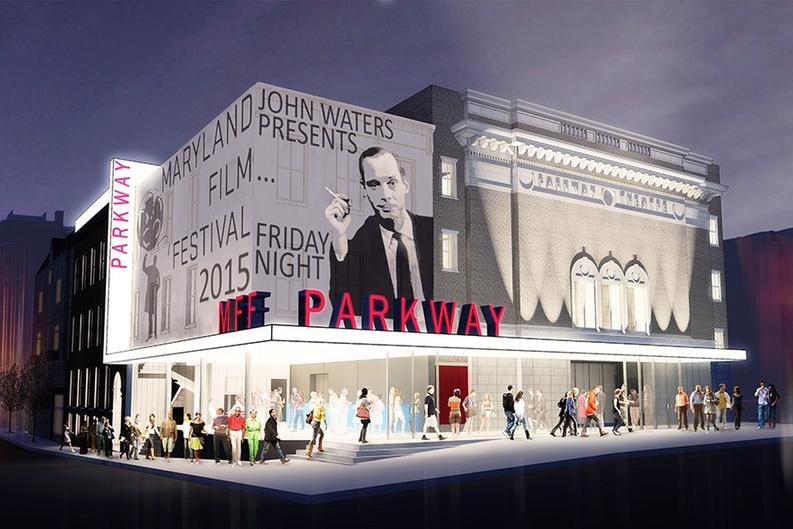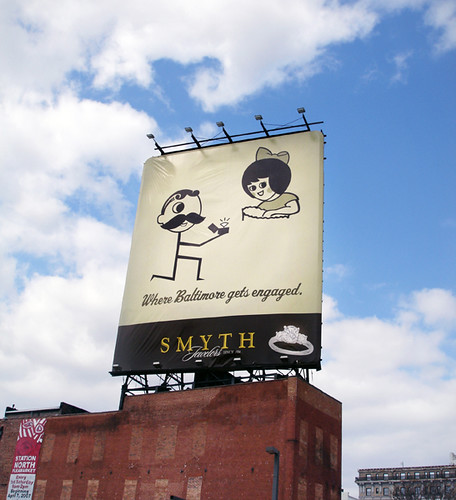10 E. North Ave
Baltimore, MD 21218
The Centre Theatre was constructed in 1939 as a studio theatre and a broadcasting center for WFBR. It is located in Station North Arts and Entertainment District on the first block of east North Avenue on the north side of the street. It is currently being restored to become a mixed use development that will include spaces for film screenings, music venues, artists’ studios, galleries, a playhouse and a restaurant.
Timeline:
- Constructed with $400,000 by Morris A. Mechanic. Building was designed by Philadelphia architect Armand Carroll.
- Opened 2/2/1939
- Operated as a studio theatre and a broadcasting center for WFBR.
- It was the first theatre in the city equipped for radio broadcasting in-house (other theatres had broadcast via remote before) and the first with the ability to project live television on the screen.
- Closed on 4/16/1959 after the Equitable Trust Company announced plans to enlarge the complex and move their operations department in early 1960
- The bank planned to add a third story and "special dust-free areas... to create the exact atmospheric conditions required for the most efficient use of highly sensitive automated electronic equipment." One example offered for this new equipment included a $55,000 sorting machine that sorted checks and other documents at a rate of 1,000 a minute guided by "magnetic ink" rather than "the familiar punch card holes."
- Purchased by a church in the 1990s
- Jubilee Baltimore purchased the property in July 2011 during a public auction for $93,000.
List of contacts:
Jubilee Baltimore
Charles Duff, President/Current owner
410.327.7373 x101
charlie@jubileebaltimore.org
Ziger/Snead Architects
Steve Ziger, Project Architect/Partner
sziger@zigersnead.com
Maryland Institute College of Art
Fred Lazarus, President
North Avenue Market
Michael L. Shecter
Carolyn E. Frenkil
Sources:
http://articles.baltimoresun.com/2012-02-06/news/bs-md-ci-theater-20120206_1_arts-district-central-baltimore-partnership-film-screenings
http://www.bizjournals.com/baltimore/news/2013/06/03/mica-johns-hopkins-film-program-part.html
http://retrobaltimore.tumblr.com/post/81719245787/jacques-kelly-centre-theater-in-ruins-but
http://cinematreasures.org/theaters/5552/photos
http://explore.baltimoreheritage.org/items/show/17#.VO6nqlPF93U
http://www.zigersnead.com/projects/details/10-east-north-avenue-mixed-use-redevelopment/
http://www.zigersnead.com/projects/details/10-east-north-avenue-mixed-use-redevelopment/










